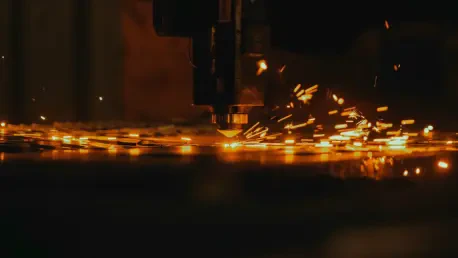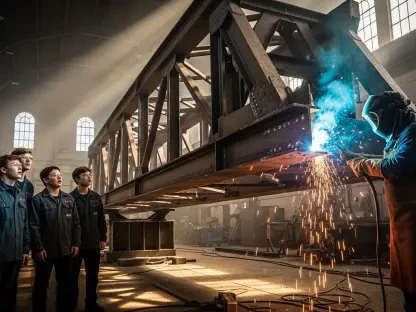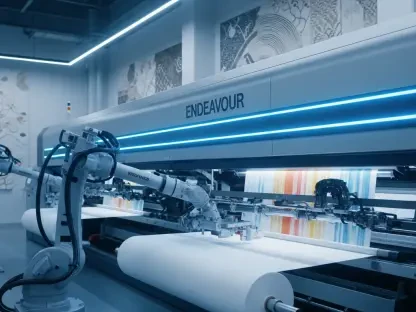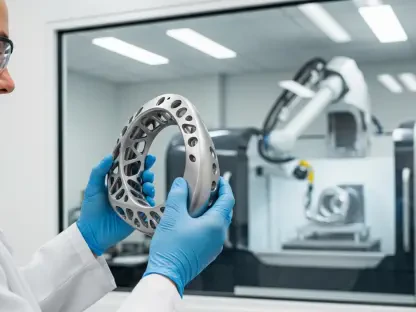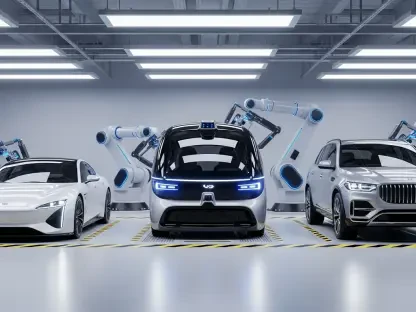In the evolving landscape of manufacturing, CNC machining stands as a transformative force in the realm of rapid prototyping, offering unprecedented precision and efficiency. Rapid prototyping is an essential phase in product development, requiring technologies that can handle stringent requirements. CNC machining, or Computer Numerical Control machining, has emerged as a pivotal tool that shortens the development cycle, enabling industries to move from conceptual designs to fully operational prototypes swiftly. By integrating the latest advances in automation and toolpath programming, this technology enhances the accuracy and speed of component production. Traditional methods, while effective, lack the efficiency that CNC machining offers, allowing for detailed and precise crafting of prototypes. In sectors operating under demanding timelines, this technology bridges the gap between initial concept and final product validation with remarkable speed.
Comparing CNC Machining and Additive Manufacturing
In the prototyping arena, CNC machining stands in contrast to newer additive manufacturing techniques like 3D printing. While additive manufacturing builds components layer by layer, CNC relies on subtractive methods, removing material from solid blocks. This subtractive approach is not just for producing prototypes; it crafts fully functional parts with the same materials intended for the end product. Materials like steel, titanium, aluminum, and specialized plastics are machined with precision, allowing for a realistic assessment of design efficacy under operational conditions. The advantage of CNC machining lies in its ability to replicate real-world product conditions during testing, offering a robust validation environment. Unlike 3D printing, CNC machining’s prototypes are not merely conceptual but provide an authentic representation in terms of material properties and functionalities.
The speed and precision of CNC machining cannot be overstated, especially when considering its direct comparison with additive methods. A recent study highlighted a 32% reduction in product cycle times for companies utilizing CNC for rapid prototyping. Such efficiency is largely attributed to the sophisticated CAM software that automates toolpaths from CAD models, paired with advanced CNC systems capable of five-axis operations. These systems mitigate the need for part repositioning, significantly reducing both machining time and potential human errors. The availability of standard, readily machinable materials further contributes to CNC’s competitive edge, whereas 3D printing often relies on specialized polymers. Thus, CNC remains a cost-effective option, epitomizing industrial readiness for rapid prototyping.
Speed and Precision Defining the Future
Mirroring the demand for speed, CNC machining’s prominence in rapid prototyping also hinges on its superior precision. Modern CNC machines attain tolerances as close as plus-minus 25 microns, which is crucial for verifying mechanical fit and performance. Such precision is unmatched in many rapid manufacturing techniques and is especially valuable for creating functional assemblies. Industries like aerospace and healthcare, where the integrity and precision of parts are critical, find CNC machining indispensable. The technology’s capacity to process engineering-grade materials allows for thorough evaluation in terms of mechanical and thermal properties, ensuring prototypes meet stringent regulatory and functional requirements.
The use of CNC parts might initially seem costlier compared to other prototyping methods like 3D printing. However, an extensive financial analysis reveals CNC machining’s cost-effectiveness over failure-prone processes and extended development timelines. Companies adopting CNC machining witness reductions in prototyping expenditures, a trend supported by data indicating a 61% decrease in costs as reported by Global Manufacturing Trends. CNC’s efficiency makes expensive molding tools, often required in injection molding techniques, unnecessary, further lowering prototyping costs. This streamlined, cost-effective approach emphasizes CNC’s value in assimilating product design towards reduced overall expenses without compromising on quality or precision.
Applications Across Varied Industries
CNC machining’s adaptability extends to numerous industries, each benefiting from its precise and swift component production. In aerospace, the capability to test engineering parts with materials like aluminum and titanium, favored for their lightweight yet strong properties, is critical for flight safety and performance. Medical sectors rely on CNC machining for intricate surgical tools and devices that must conform to strict medical and ergonomic standards. This ensures patient safety and regulatory compliance and mitigates risks associated with medical device testing. Consumer electronics also benefit from CNC precision in developing prototypes that require rigorous testing under conditions that closely mirror actual usage scenarios. The emphasis on precision and material integrity helps replicate manufacturing environments, facilitating dimensional and thermal stress testing before production.
Despite CNC machining’s advantages, challenges remain, primarily related to its subtractive nature. Creating complex, internally detailed structures can be cumbersome, a domain where additive manufacturing excels. Tool and equipment calibrations necessary for maintaining CNC operations might affect efficiency in fast-paced production settings. These industry-specific demands lead some enterprises to adopt a hybrid manufacturing strategy, combining CNC’s precision with the intricate capabilities of additive processes. This approach leverages the best attributes of both techniques, ensuring superior results in manufacturing operations while catering to bespoke prototyping needs.
Leveraging CNC Machining for Future Innovation
In prototyping, CNC machining contrasts with additive methods like 3D printing. While additive builds up layers, CNC uses subtractive techniques, carving from solid blocks. This approach not only produces prototypes but creates functional parts using materials like steel, titanium, aluminum, and specialized plastics. It allows for precise machining to ensure designs can be tested under authentic operational conditions. CNC’s advantage is that it offers prototypes that mirror real-world conditions, providing a meaningful and robust validation environment compared to the conceptual nature of 3D printing.
The speed and precision of CNC machining are noteworthy, particularly against additive manufacturing. Studies reveal a 32% reduction in product cycle times for companies using CNC in rapid prototyping due to sophisticated CAM software, automating toolpaths directly from CAD models. Advanced CNC systems with five-axis capability streamline processes, minimizing the need for part repositioning, reducing machining times, and decreasing human error. With readily available materials, CNC remains a cost-effective, industrial-ready option for rapid prototyping.
